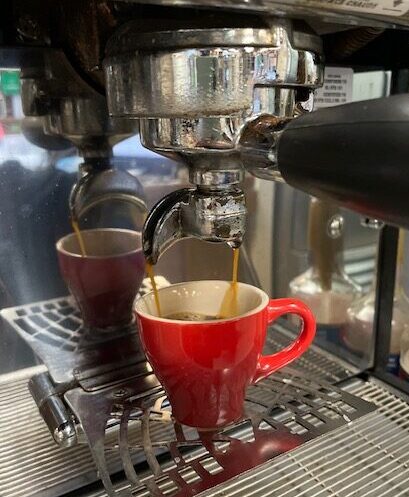Intro:
 First and foremost, there is no single “right” way to consume coffee. In your search for that “perfect cup”, always remember that you should drink coffee the way you like best. That said, there are certainly some objective factors that will help you find what works best. Some ofthese factors include, water quality, brewing methods, freshness, and so on. We will consider these factors below.
First and foremost, there is no single “right” way to consume coffee. In your search for that “perfect cup”, always remember that you should drink coffee the way you like best. That said, there are certainly some objective factors that will help you find what works best. Some ofthese factors include, water quality, brewing methods, freshness, and so on. We will consider these factors below.
Freshness:
Perhaps no other factor is as important to a good cup of coffee than the freshness of the beans/grounds that you are using. I’ve often used baked goods as an analogy of something we are all familiar with. We all know that the “day old” baked goods are not made differently than the fresh ones. Obviously the “day olds’ are made of the exact same ingredients in the same manner. They just aren’t fresh anymore. With coffee this is no different. No matter how good the coffee is when it is fresh, once that freshness period is gone, it will not taste the same. In contrast, coffee doesn’t go stale in one day. We recommend trying to use your coffee in less than 2-3 weeks from the date of roasting for best flavor.
Storage (Refrigerator/Freezer):
The coffee we sell is packaged in foil-lined zip-sealable bags with a one-way valve to allow gasses out, but not in. We recommend keeping this bag at room temperature and out of direct sunlight.
You can put your bag of coffee in the freezer for up to six months if you are unable to use it right away. However, once you take the bag out of the freezer and start using it, do not put it back in. By taking your frozen coffee in and out of the freezer or fridge, you are exposing it to warm air and creating condensation every time you do so. This creates unwanted moisture, which will quickly degrade the flavor of your coffee.
Water:
No matter how good the coffee grounds that you use are, if your water is terrible, so will your end result. Once again, this will be a matter of taste. If you grew up drinking well water, with lots of hard minerals or a noticeable iron content, you may prefer to have more minerals in your water. If you ever drank distilled water, you know how much different it tastes compared to typical drinking water. An activated carbon water filter is ideal for taking out chemicals, like the chlorine found in most tap waters. Reverse osmosis systems are another good way to remove unwanted chemicals from your water.
Grind:
Good coffee grinders allow you to choose how fine or how coarse you want your grounds to be. The correct grind for your coffee depends on the method you use for brewing. Most coffee making equipment comes with instructions which tell you how you should grind your beans. In general, the faster the brewer brews the coffee, the finer the grind and vice versa. Espresso shots are usually pulled in under 30 seconds and these require the finest grind – almost like a powder! On the other end, cold-brew coffee is prepared by soaking the beans in water for several hours. Hence, a coarse grind is used for this method.
If you do not have a grinder, we can grind the beans prior to sending it out. The reason that grinding your own coffee as you use it is preferred is to maintain freshness. Coffee loses freshness as it interacts with the surrounding atmosphere. When a coffee bean is ground up, it dramatically increases the surface area of the pieces allowing much more of the coffee to be exposed directly to the air around it.
Amount:
We often suggest that on your first time brewing our coffee, use the same amount or slightly less than the amount you have been using of your previous brand. After that you can adjust to your preferred taste – either adding more or less grounds. If your old coffee has come from a can, then you will find that you need less of our coffee since it is fresh and hasn’t lost its flavor.
Roast:
Wherever coffee is sold, you almost always see it referred to in terms of ‘dark’, ‘medium’, or ‘light’ roast. These terms are mostly meaningless and cause more confusion than anything. More on that here. In short, the strength of the coffee flavor has more to do with the ratio of grounds to water than it does with the how high the roast temperature reached before finishing the batch. If you are someone who prefers a ‘dark’ roast, use more grounds per given amount of water. If you prefer a ‘light’ roast, use less grounds for the same amount of water.
Conclusion:
Remember that there is no “right” way to experience coffee. Finding the methods that work best for your particular taste is all part of the adventure. The vast amount of marketing and “snobby” terminology in the coffee industry intimidates a lot of people who just want to enjoy a good cup of coffee. Rest assured, there is nothing “fancy” about over-complicated coffee. With the right beans, some good water and a decent coffee brewer, you can easily make great-tasting coffee at home quite easily and consistently.
